At a glance
A diverse gut microbiome is essential for digestive health, strong immune defenses, effective metabolic functions, and cognitive wellness. Lifestyle and dietary factors can disrupt microbial balance. Supporting beneficial gut bacteria is key to maintaining a resilient digestive tract and overall health and well-being.
A balanced gut microbiota is crucial for maintaining a healthy digestive tract, strong immune defenses, vital central nervous system functions, and crucial metabolic processes.
Learn about the dietary and lifestyle factors that can damage the intestinal microbiota and discover how to increase gut bacteria diversity naturally to promote a healthy body.
What is the gut microbiome?
The gut microbiome refers to a vast community of microorganisms, including beneficial bacteria, yeasts, fungi, and viruses, that reside in the digestive tract.
While some of these microbes are found in the small intestines, the majority of the human gut microbiota is located in the large intestines and plays a critical role in maintaining overall health.
A healthy gut depends on a diverse and balanced population of these organisms. When beneficial microbes thrive, they support digestive health, protect against harmful bacteria, and help regulate immune responses.
Maintaining gut microbiome diversity is crucial, as a wide variety of beneficial bacteria means a more resilient and adaptable gut environment. This is vital for effective digestive processes, the absorption of nutrients, and even mental well-being.
However, poor dietary habits, prolonged stress, chronic sleep disruption, and certain medications can disrupt a healthy microbiome and lead to dysbiosis, which can trigger digestive issues and various other health conditions.
Watch the video below to discover how to support a balanced intestinal microbiome.
Why a diverse gut microbiome matters
Maintaining balanced gut microbes isn’t only important for a healthy digestive system but also for supporting the function of other vital systems throughout the body.
One key role of gut bacteria is producing short-chain fatty acids (SCFAs), which serve as fuel for the cells lining the colon, reduce inflammation, and strengthen the gut barrier.
This may explain why a lack of gut microbe diversity can increase the risk of gastrointestinal tract disorders, including Crohn’s disease and inflammatory bowel disease (IBD).
Furthermore, growing evidence points to a link between gut microbe composition and central nervous system function, often referred to as the gut-brain axis.
A study published in Integrative Medicine highlights that gut microbes influence emotional regulation and neuromuscular functions and that dysbiosis increases the risk of mental health disorders and poor cognitive functions.1
A balanced microbiota is a vital part of the body’s defense system as it helps regulate immune responses, prevents bad bacteria from proliferating, and supports the development of immune cells in the gut.
In addition, a diverse microbiome helps:
- Absorb nutrients
- Promote regular bowel movements
- Maintain metabolic health
- Support detoxification and waste removal
- Recycle bile salts
- Regulate appetite and energy balance
- Reduce inflammation
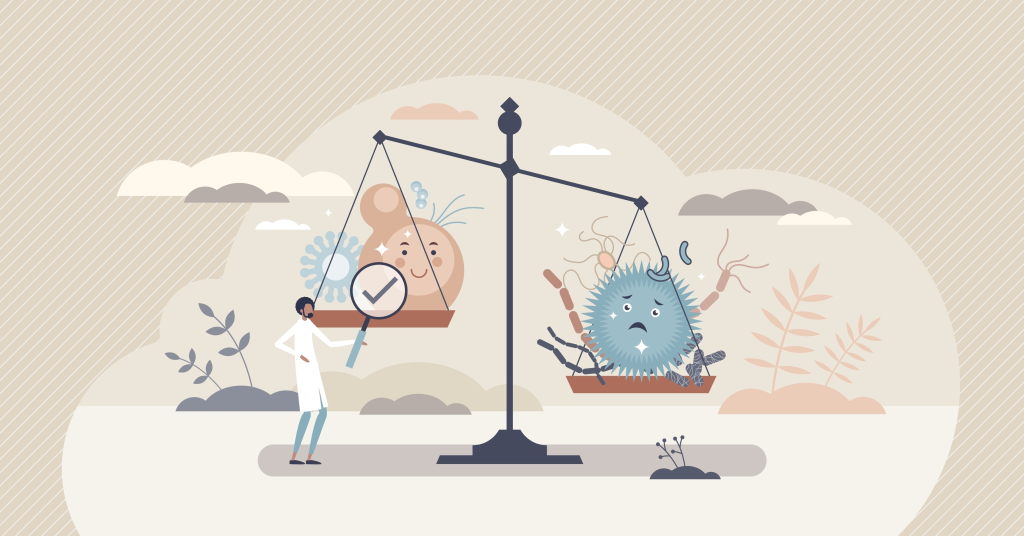
Signs you’re lacking bacterial diversity
Because beneficial gut bacteria support a wide range of essential physiological functions, poor microbial diversity can lead to various symptoms and health issues.
Poor gut health and digestive discomfort, such as gas, bloating, and irregular bowel habits, are common signs of a lack of bacterial diversity.
Other symptoms indicative of imbalanced gut microbes include:
- Frequent infections
- Skin issues such as eczema, acne, and psoriasis
- Unexplained weight gain
- Mood swings
- Chronic fatigue
- Brain fog
- Nutrient deficiencies
- Sugar cravings
- Sleep issues
In addition, research published in Nutrients found that imbalanced gut microbes can contribute to poor blood sugar regulation and insulin resistance, which are key risk factors for type 2 diabetes.2
The authors conclude, “Increased proportion of Firmicutes and Actinobacteria and decreased proportion of Bacteroidetes have been associated with insulin resistance, increased body weight gain and other comorbidities of the metabolic syndrome.”
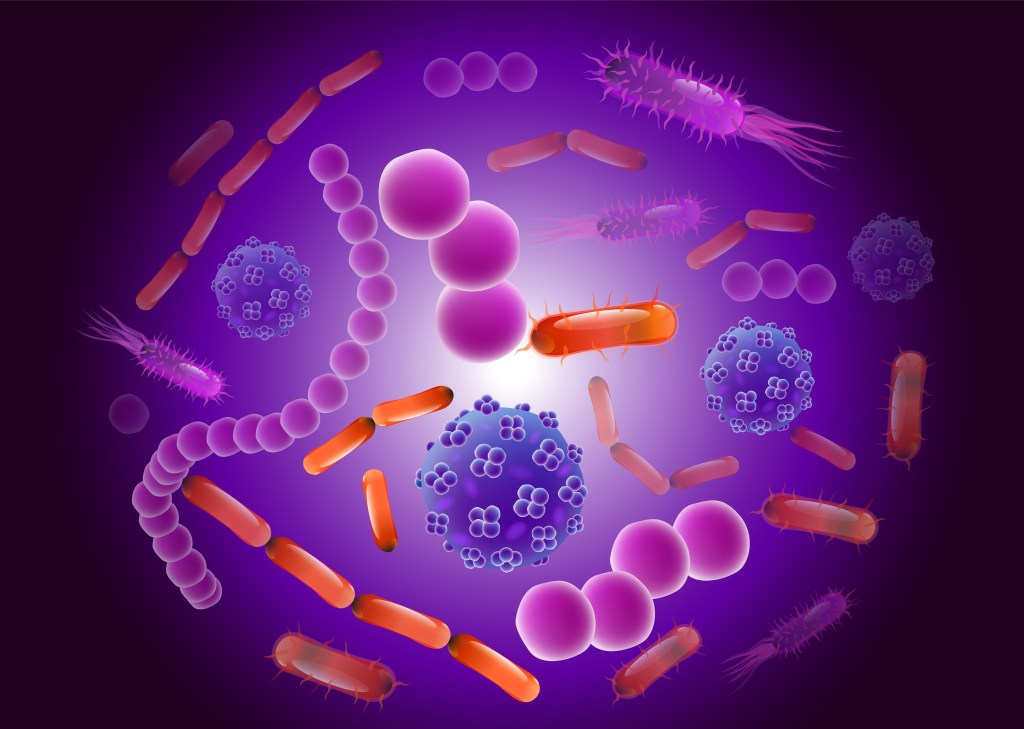
Important gut bacteria strains
The human gut microbiome consists of trillions of microbes, including over 1000 known bacterial species. However, most individuals typically carry around 160 to 200 different species at any given time.
Here are some of the most important gut bacterial strains.
Lactobacillus
Lactobacillus bacteria play a vital role in supporting digestion, maintaining a healthy gut lining, and producing lactic acid, which helps prevent the growth of harmful microbes.
They also help reduce digestive discomfort, such as bloating, improve nutrient absorption, and promote immune functions by enhancing the gut’s natural defense mechanisms.
Some of the most common types of Lactobacillus species in the human gut include:
- Lactobacillus rhamnosus
- Lactobacillus acidophilus
- Lactobacillus bulgaricus
- Lactobacillus plantarum
- Lactobacillus reuteri
- Lactobacillus casei
Bifidobacterium
Naturally found in the colon, Bifidobacteria are a group of anti-inflammatory gut bacteria that help break down dietary fiber, promote regular bowel movements, and support robust immune functions.
Certain bacteria belonging to the Bifidobacterium species have also been linked to weight loss, metabolic balance, and improved gut barrier integrity.
Some of the most common types of Bifidobacterium in the human gut include:
- Bifidobacterium longum
- Bifidobacterium bifidum
- Bifidobacterium lactis
- Bifidobacterium breve
Saccharomyces boulardii
Although technically a yeast rather than a bacterium, Saccharomyces boulardii (S. boulardii) is a well-researched probiotic microbe with powerful gut-protective benefits.
S. boulardii supports gut lining integrity, strengthens the intestinal barrier, and helps inhibit harmful microbes such as Candida albicans and Clostridium difficile.
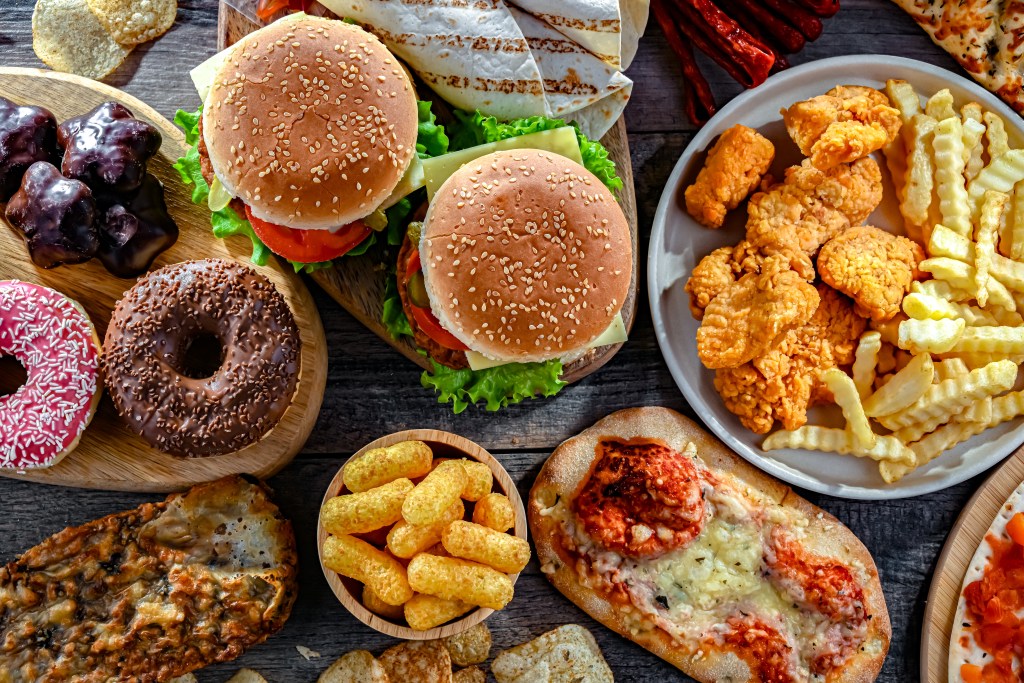
What destroys gut bacteria diversity?
The use of broad-spectrum antibiotic drugs is one of the most common causes of reduced gut bacterial diversity. These medications not only kill harmful bacteria but also eliminate beneficial strains, disrupting the delicate balance of the microbiome.
In addition, because gut microbes process and metabolize the foods you eat, poor dietary habits can negatively impact the diversity of your gut bacteria.
Diets that lack dietary fiber but are high in ultra-processed foods, added sugars, and artificial sweeteners can promote the growth of harmful bacteria while starving beneficial ones.
Other factors that can destroy gut microbe diversity include:
- Alcohol
- Chronic stress
- Lack of sleep
- Sluggish gallbladder function
- Poor liver health
Furthermore, research published in Environmental Toxicology and Pharmacology found that even low-dose exposure to glyphosate, a common herbicide used in conventional farming, can significantly reduce levels of beneficial gut bacteria, including Bifidobacterium and Lactobacillus.3
“Regular intake of glyphosate through non-organic foods can deplete healthy bacteria and is an often overlooked cause of an unhealthy gut environment,” explains Dr. Berg.
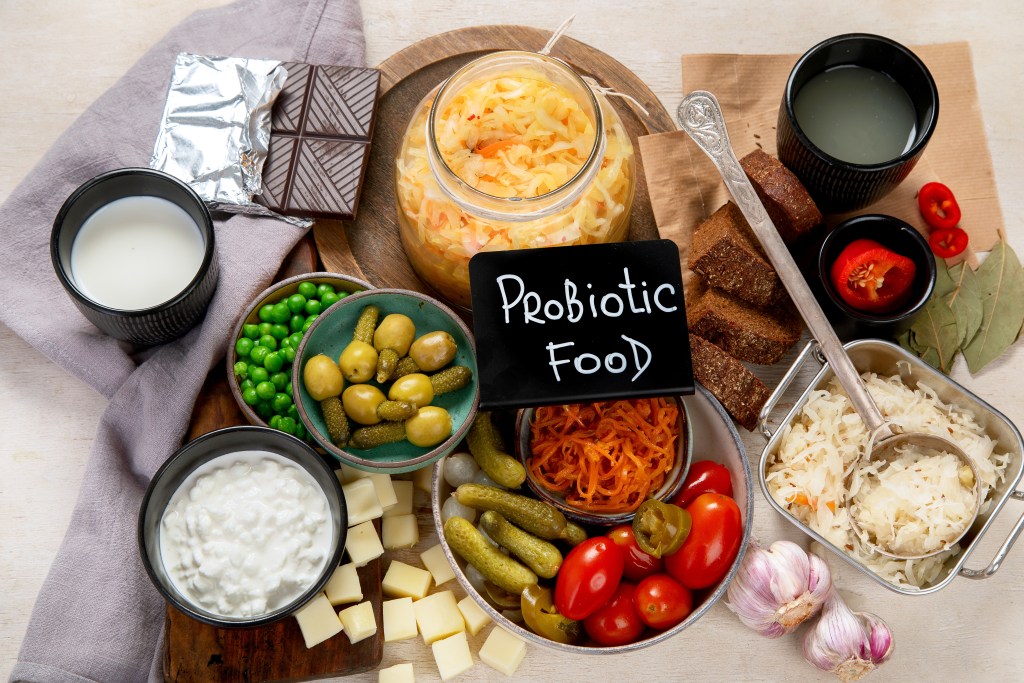
How to increase gut bacteria diversity
Limiting factors that destroy gut microbes and making beneficial lifestyle and diet changes can play a significant role in supporting the growth of beneficial bacteria.
Here are five steps to increase microbial diversity and improve your gut health.
1. Incorporate plenty of pre-and probiotic foods
A diet rich in both prebiotic and probiotic foods is one of the most effective ways to support a healthy gut microbiome.
Prebiotics are dietary fibers found in plant-based foods such as onions, garlic, and asparagus. These fibers serve as a primary fuel for beneficial bacteria, supporting their growth and proliferation.
Fermented foods such as yogurt, kefir, sauerkraut, kimchi, miso, and kombucha are rich sources of probiotic microbes, making them a valuable option for replenishing and maintaining healthy gut bacteria.
2. Follow a nutritious low-carb diet
Following a nutritious, low-carb diet like Healthy Keto®, which is centered around organic whole foods, can have a powerful impact on gut health.
Highly processed carbohydrates and sugars can feed harmful bacteria and yeast in the gut, contributing to inflammation, small intestinal bacterial overgrowth (SIBO), and dysbiosis.
By limiting carbohydrates and focusing on nutrient-dense foods, including leafy greens, non-starchy vegetables, high-quality proteins, nuts, seeds, and nutritious fats, Healthy Keto supports an intestinal environment beneficial for microbes.
This advanced version of the ketogenic diet also emphasizes organic foods, which limits exposure to pesticides such as glyphosate, which has been shown to disrupt gut bacteria balance.
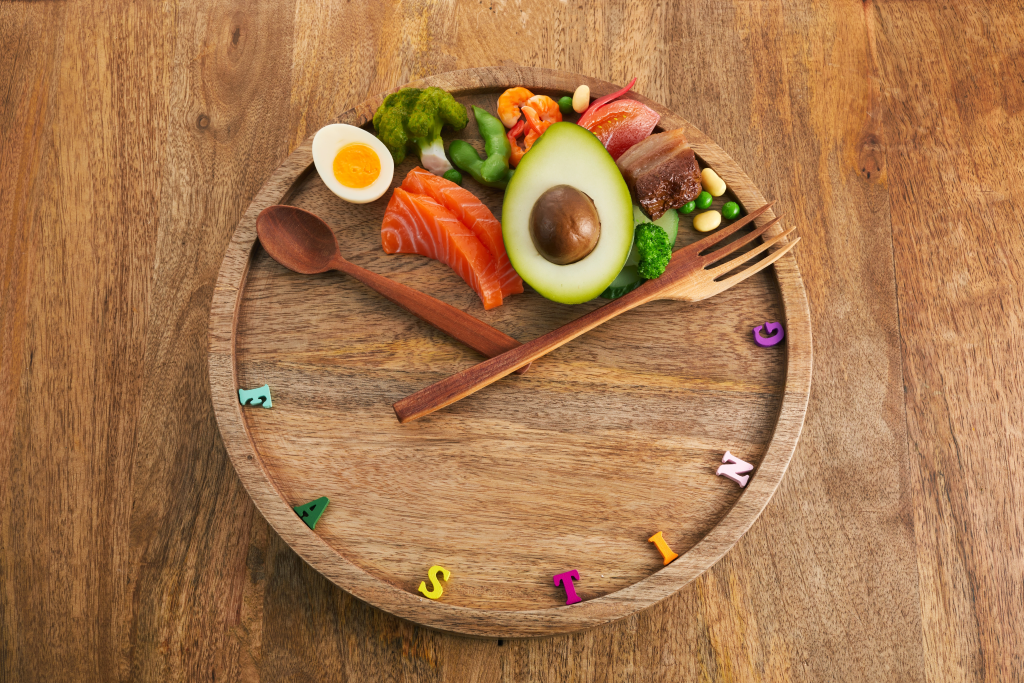
3. Practice intermittent fasting
Intermittent fasting is a mealtime approach that involves alternating between periods of caloric restriction and periods of eating.
Evidence published in Frontiers in Nutrition found that intermittent fasting can positively affect gut health and microbial diversity.4
It’s believed that by minimizing constant food intake, intermittent fasting limits the availability of excess nutrients and fuel that harmful bacteria might utilize for growth and proliferation.
Prolonged periods of caloric restriction also allow the digestive system to rest and repair, which supports a balanced environment that allows beneficial bacteria to thrive.
4. Prioritize sleep
Getting adequate amounts of high-quality sleep is essential for maintaining a gut-healthy lifestyle.
This has been confirmed by a study published in the International Journal of Molecular Science, which found that sleep deprivation directly impacts microbiome diversity and increases the risk of dysbiosis.5
Prioritizing seven to nine hours of restful sleep each night supports microbial diversity, optimal digestion, immune response, and mood regulation.
To improve sleep quality, it’s recommended that you establish a consistent bedtime routine, avoid screens before bed, and create a dark, quiet, and relaxing sleep environment.
Adequate sleep is also essential to combat the effects of stress, which has also been linked to changes in gut microbe composition.
5. Stay active
Regular exercise and physical activity are vital but often overlooked aspects of maintaining a balanced gut microbiome.
Movement has been shown to increase the diversity of gut bacteria. Even moderate activity, such as walking, stretching, or swimming, can positively influence the composition of the microbiome by encouraging the growth of beneficial bacteria.
Exercise also has stress-reducing effects, supports metabolic health, promotes a healthy body weight, and helps enhance sleep quality, all of which benefit gut health and a balanced gut microbiome.
Key takeaways
- A balanced gut microbiome plays a crucial role in maintaining a healthy body and mind.
- Poor dietary habits, stress, lack of sleep, antibiotics, and environmental toxins can disrupt bacterial diversity.
- Regularly consuming prebiotic- and probiotic-rich foods helps nourish beneficial gut microbes and promote a diverse microbial environment.
- Following a Healthy Keto diet, practicing intermittent fasting, and staying physically active also support microbiome balance.
- Prioritizing sleep, managing stress, and choosing organic produce help you maintain bacterial diversity.
FAQ
1. How do I increase gut bacteria diversity?
Some of the best ways to increase gut bacteria diversity include eating a wide variety of fiber-rich foods and incorporating fermented foods such as yogurt, kefir, sauerkraut, and kimchi.
Following a low-carb diet, practising intermittent fasting, and staying physically active while avoiding alcohol and non-organic produce can further support gut health and microbial balance.
2. What are the symptoms of a lack of bacterial diversity in the gut?
Common gastrointestinal symptoms linked to imbalanced gut microbes include gas, bloating, abdominal pain, and poor digestion.
Other symptoms of low bacterial diversity can include fatigue, brain fog, mood swings, frequent infections, skin issues, food intolerances, and difficulty maintaining a healthy weight.
3. How do I replenish good bacteria in my gut?
To replenish good bacteria in your gut, consume plenty of fermented foods rich in probiotic live cultures, such as yogurt, kefir, sauerkraut, miso, and kimchi.
Supporting these probiotics by eating prebiotic-rich foods, including garlic, onions, leeks, dandelion greens, and asparagus, provides the necessary fuel for good bacteria to grow and thrive.
4. What foods are good for diverse gut bacteria?
Consuming fermented foods such as yogurt, kefir, sauerkraut, miso, and kimchi can help replenish good bacteria in your gut.
Additionally, prioritizing prebiotic foods such as garlic, onions, leeks, dandelion greens, and asparagus supports the growth and maintenance of beneficial microbes and helps maintain a diverse microbiota.
Sources
- https://pmc.ncbi.nlm.nih.gov/articles/PMC6469458/ ?
- https://pmc.ncbi.nlm.nih.gov/articles/PMC3705322/ ?
- https://www.sciencedirect.com/science/article/abs/pii/S1382668923000911 ?
- https://pmc.ncbi.nlm.nih.gov/articles/PMC10894978/ ?
- https://pmc.ncbi.nlm.nih.gov/articles/PMC10253795/ ?


















